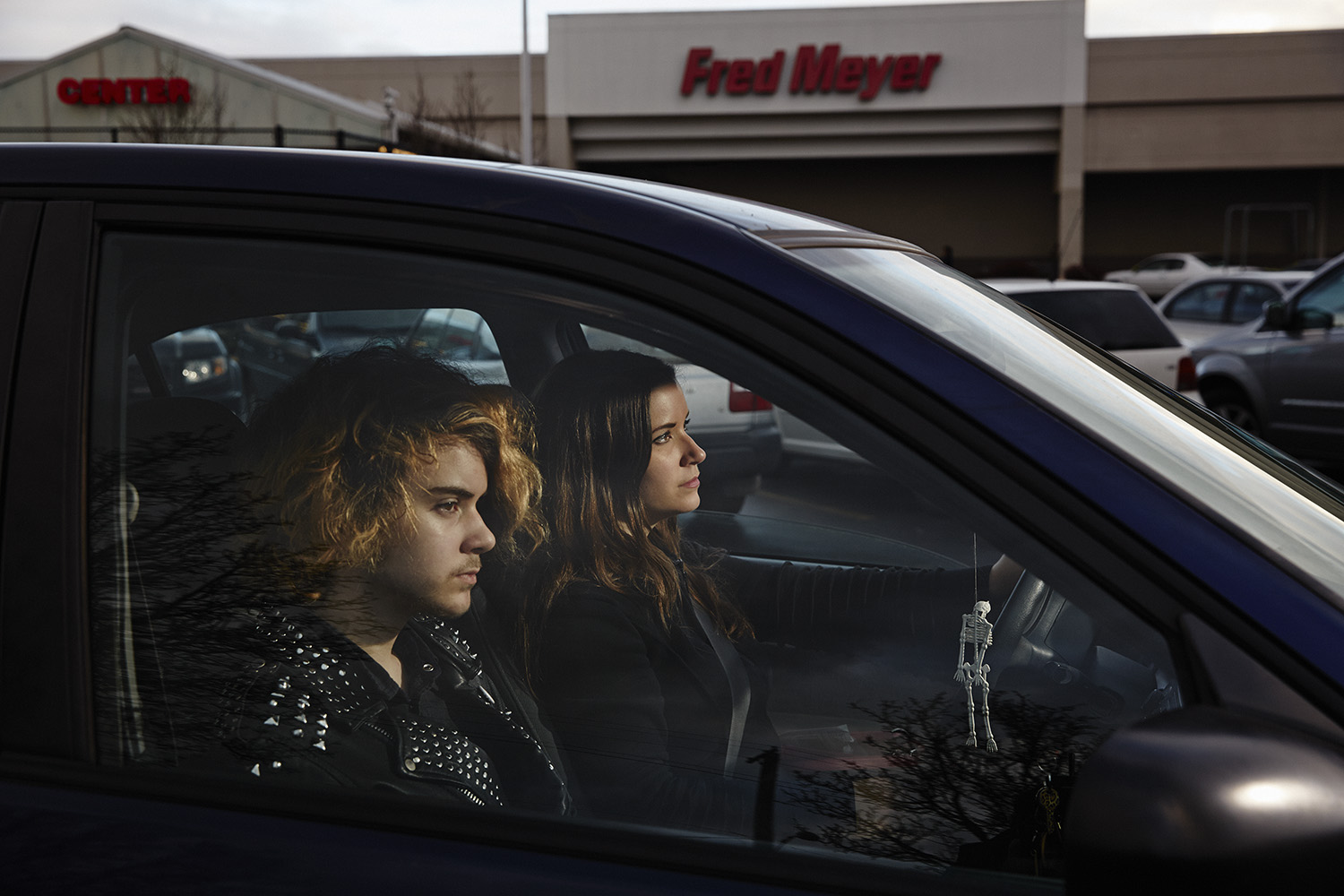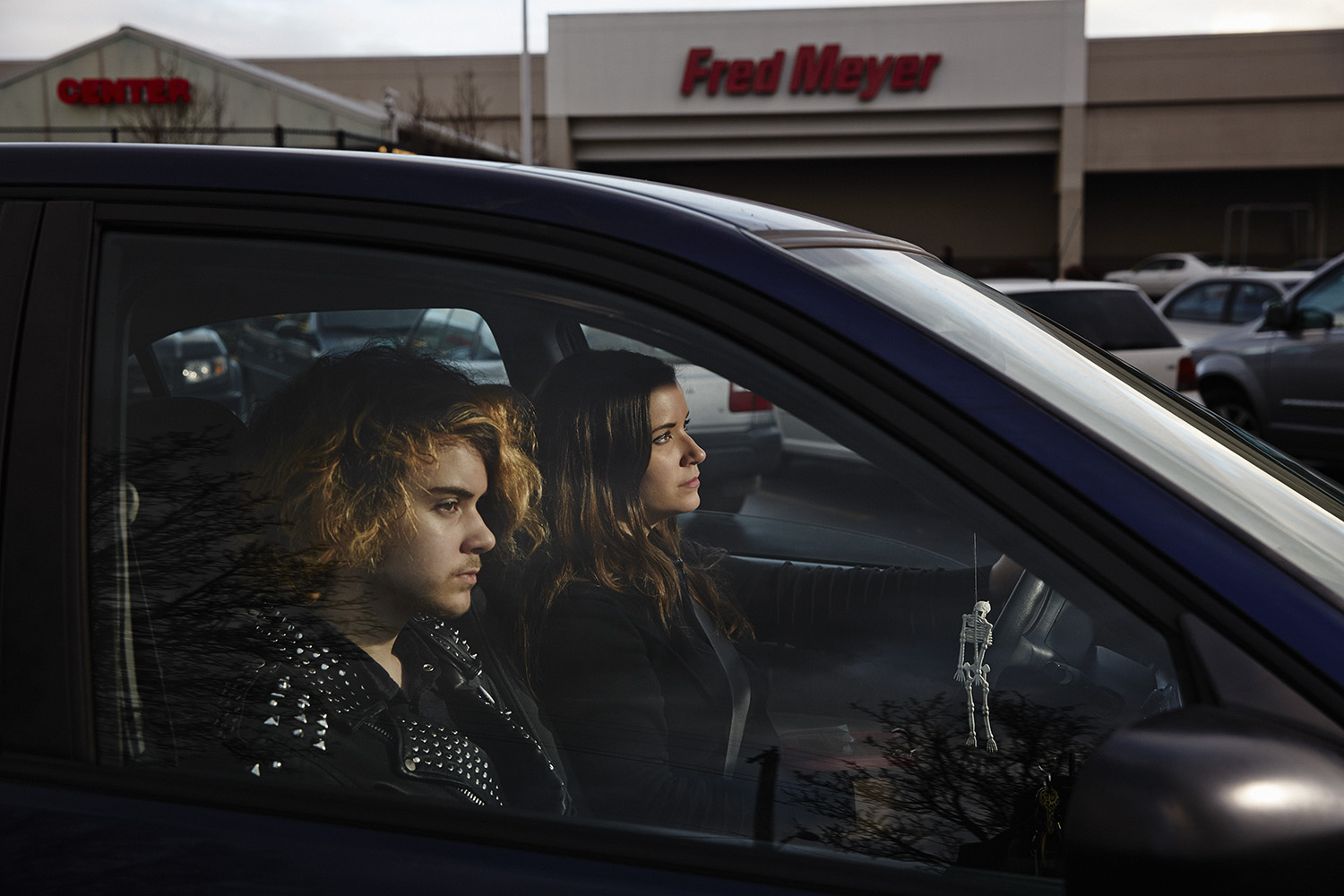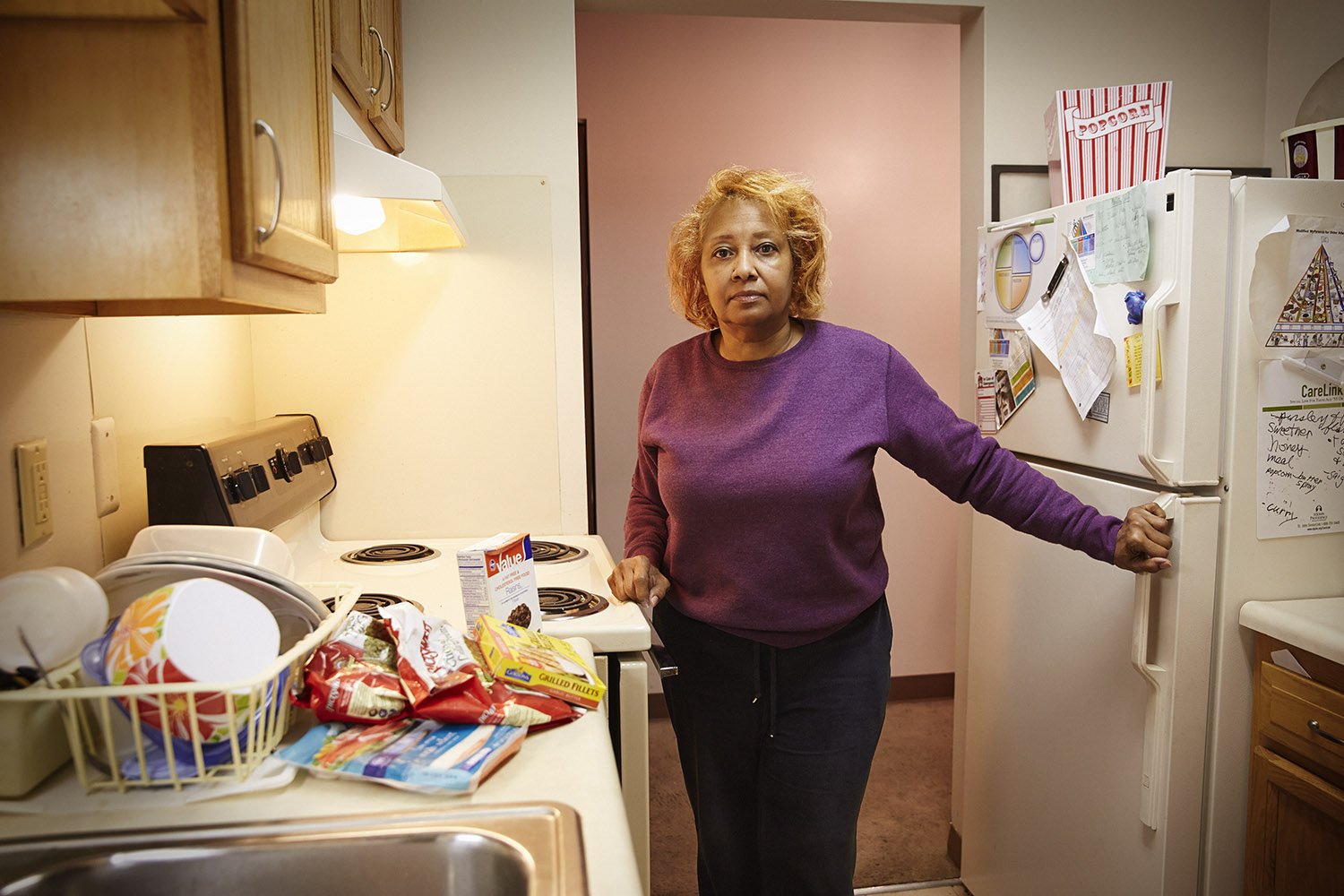
The bipartisan Farm Bill that President Obama signed into law on Feb. 7 will cut $8 billion from the Supplemental Nutrition Assistance Program (SNAP) over the next 10 years. The cut is more like a snip when compared to the nearly $40 billion decrease in funding proposed by Republican lawmakers during the four years it took lawmakers to come to an agreement. For the subjects of this LightBox feature, however, and for the millions like them who depend on SNAP, every little bit that gets chipped away hurts. New York-based photographer Jeff Riedel spent days with each subject, capturing a glimpse into the lives of the 47 million people who depend on government assistance for food.
“When you see that these are really beautiful people, good people doing as much as they can to get by and it’s still not enough,” Riedel said, “you realize that it is easy for the government in all of their callousness to look at things as statistics and as numbers. But when you get in and see the real life humans dealing with real life problems . . . it’s a different sort of process.”
Take Carly Poe, a 33-year-old single mom from Portland, Ore. She’s working on her Master’s in Public Health at Portland State University so that she’ll one day be able to provide more for her family. She works about 10 hours a week, part-time, at the hospital where her 14-year-old son was treated for cancer as a baby. She’s one of 805,000 Oregonians, about 20% of the state’s population, who depend on SNAP. Though her benefits were only set to fall to $220 from $240, she and her son received about $120 for food in February— money she says lasted about a week. In March she received $220, which she says will last just over two weeks, at most. To supplement her SNAP funds, Carly gets creative with her bills; she takes money she would use for bills and buys food. (She says it’s like playing a game of Tetris).
“I try to make sure we eat healthy, fresh food and it’s getting hard to do,” Poe says. “We’re struggling.”
These people could be your neighbors, your co-workers, or the person standing behind you at the supermarket. Carly Poe, Jennifer Noonan, J.B. Hillman, and Willie Smith are just a handful of the tens of millions–most of whom live with children, the elderly, or disabled—who depend on SNAP for food. They’re mothers, caregivers, daughters, students, and advocates. They work hard, or did before they reached retirement, but they face constant struggles to maintain their poverty-stricken households. Though we’ve only profiled a few, they’re stories are not the exception. And given the cuts to SNAP benefits Americans have already faced and will continue to face over the next decade, their stories aren’t likely to change anytime soon.
SNAP helped keep about 4.9 million people out of poverty in 2012, including 2.2 million children, according to the left-leaning Center for Budget and Policy Priorities. Last November, SNAP lost $5 billion in funding when the 2009 Recovery Act’s benefits ended. The average family of three lost an average of $29 per month as a result of that cut. Jennifer Noonan, a 24-year-old single mom of two in Portland, saw her benefits fall from $524 to $475, money she says barely lasts her the month.
When the photos were taken in December, Jennifer was working part-time at Wal-Mart, but because her position was seasonal she’s out of work. In the photos, Noonan is shown with the food she was able to buy with the funds she had at the end of the month (about $20), including a couple of packs of hotdogs, margarine, canned chili, and broccoli. She shops at a Grocery Outlet, a discount store, near her home to save cash. Noonan, a product of the foster care system, says the part that hurts her most is the impact on her children. “I don’t care if you take food out of my mouth,” she says. “But I care that you take food out of my kids’ mouths. They don’t deserve this.”
Willie Smith, a 73-year-old from Detroit and J.B. Hillman-Rushell, who moved from Georgia to Detroit to care for her mother with Alzheimer’s, are two of the millions of seniors who depend on SNAP to supplement their Social Security benefits. Smith, a retired clerical worker, receives about $1091 a month in Social Security, the majority of which she uses to pay for her Medicare premium, life insurance, rent, and transportation. Whatever is left is added to the $43 she gets to pay for food. Hillman-Rushell and her mom receive $14. “We can get about four things out of that,” she says.
I asked each of them what they hoped people gained from seeing Riedel’s project and they all had similar answers: that people, particularly lawmakers, begin to consider their humanity. “I want to put a face to the issue,” said Smith. “Those politicians who want to eliminate the food stamp program, they should be ashamed of themselves. We can barely make it.”
Still, make it they must. “I got a sense,” Riedel told TIME, “that somehow, no matter what cuts they’re facing, they are going to have to figure things out and move forward.
Jeff Riedel is an editorial and commercial photographer based in New York. See more of his work here.
Maya Rhodan is a reporter for TIME based in Washington.










More Must-Reads from TIME
- Cybersecurity Experts Are Sounding the Alarm on DOGE
- Meet the 2025 Women of the Year
- The Harsh Truth About Disability Inclusion
- Why Do More Young Adults Have Cancer?
- Colman Domingo Leads With Radical Love
- How to Get Better at Doing Things Alone
- Michelle Zauner Stares Down the Darkness
Contact us at letters@time.com